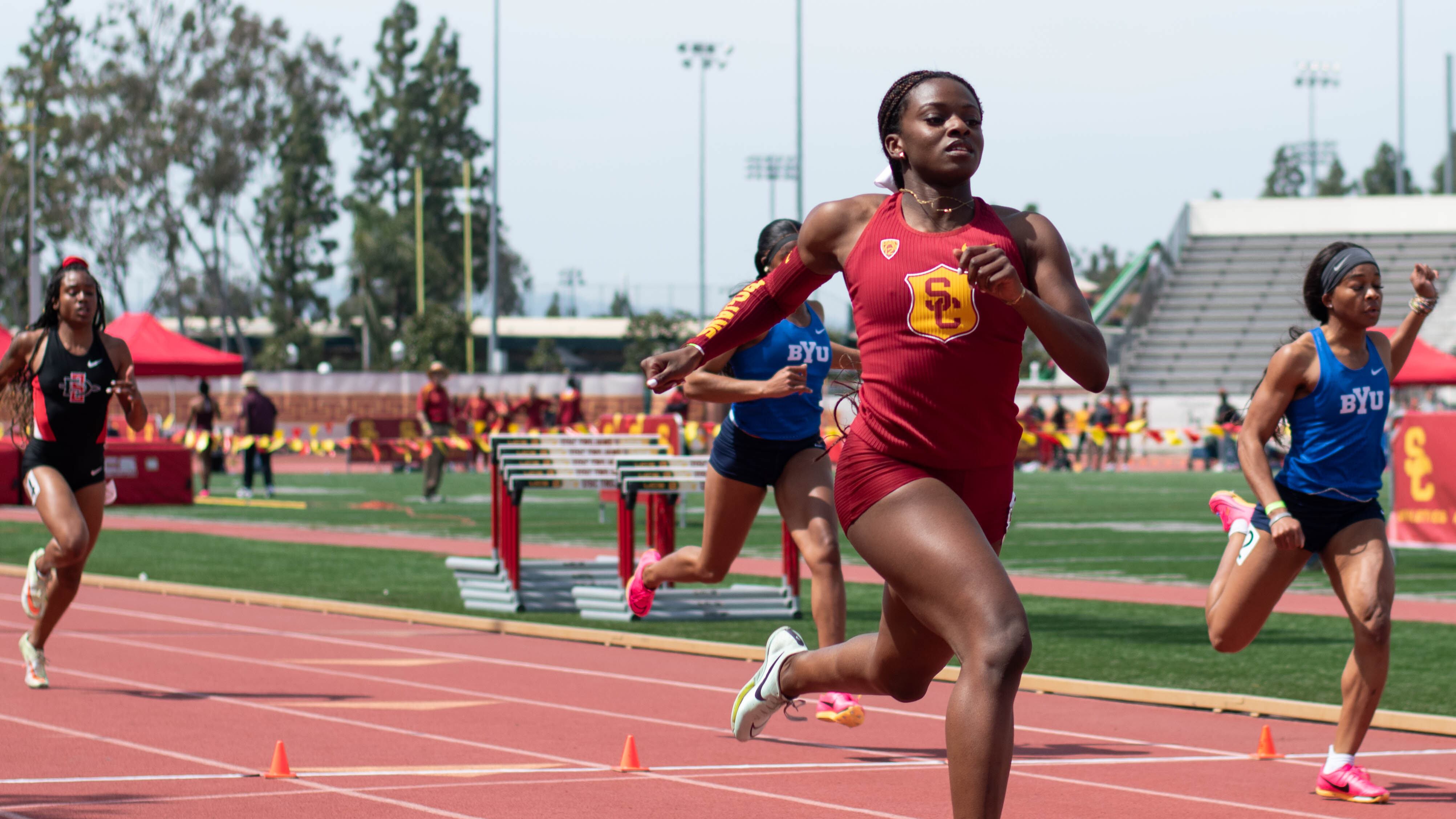California is famous for its beautiful weather, clear blue skies, and warm sun beating down. But what happens when that sun becomes too hot?
Temperatures are continuously rising, changing California’s climate. According to the California Office of Environmental Health Hazard Assessment (OEHHA), in the past 70 years, half of the largest wildfires in the state occurred in just two years. The last two decades have been the driest in the millennium, with temperatures up by an average of 2.5 degrees since 1895. The rising temperatures create consequences not only to the planet but also for the people who live on it.
Rising heat causes increased air pollution. Major cities are heavily polluted, so the mixture of rising heat in California with air pollution in Los Angeles is unhealthy for everyone, especially for athletes who are constantly training and breathing in the L.A. air.
“When the air quality is poor, they [athletes] get exposed to pollutants and contaminants that others may not be exposed to,” said Edward Avol, Professor of Clinical Preventive Medicine at the Keck School of Medicine. “They tend to work harder and go to higher ventilation rates, so they breathe more air, and because they breathe more air, they take in a higher proportion of pollutants because they’re breathing more heavily for a longer period of time.”
Endurance athletes, like runners, train outside and breathe in this contaminated air every time they run. They compete in both fall and spring seasons, and a lot of their heavy training occurs during the hottest season of the year, summer.
The air pollution and rising heat not only affects how these athletes train and perform, but it also impacts their respiratory health. If poor air quality or high heat causes extremely unhealthy conditions, coaches will often have their athletes cross-train or have a lighter practice.
In fact, according to USC Freshman, track and cross country runner, Angelina Vasquez, the athletes take weekly hydration tests that they must pass in order to practice. “Our coaches want what’s best for us and they listen to us and if we aren’t feeling too well, they have no problem with saying you can go home that day, or train indoors, like aqua jogging in the pool,” she said.
These alternative workouts can be beneficial in protecting athletes from heat exhaustion and the air pollutants that they are more at risk of inhaling. Implementing these practices is especially important during seasons that are prone to fires, like the fall.
A study on the Impact of air pollution on running performance reported that high-caliber athletes competing at higher levels of air pollution, even levels below the EPA’s threshold for “good” air quality, experienced slower race times. They concluded that their findings provide a strong rationale for coaches to consider approaches to minimize air pollution exposure among their athletes.
“We don’t feel [the pollution] at practice because we’ve gotten so used to it, but when we went out to the Pac-12 [Cross Country Championship] in Washington, everything felt so much lighter,” Vasquez said.”You feel so light running, and it shocks you because you’re not used to getting so much clean air.”
Many USC athletes have become accustomed to the poor air quality, but also recognize how their quality of performance is strengthened in better conditions.
“We practice at the Port of L.A., which is pretty much a lot of tugboats and shipping containers. I’ve noticed it’s a polluted area, and the water isn’t as clean as some other areas,” USC Freshman rower, Michaela Banta said.
The Port of L.A. is heavily polluted and worsening over time. The cancer-causing diesel particulate matter rose 56%, smog-forming nitrogen oxides jumped 54%, and greenhouse gas emissions increased 39% from 2020 to 2022.
Types of pollutants that cause harm to lung function include, “The particular kinds of toxicants, including ozone, particulate matter of certain sizes, and nitrogen dioxide. These pollutants, which are associated with among other things, the burning of fossil fuels, or the chemical reactions that take place in the air as a result of the burning of fossil fuels, lead to a number of both short-term and long-term respiratory problems,” Avol said.
Having athletes train in such a polluted environment is harmful to their lungs. Coaches help athletes stay healthy by encouraging them to take breaks when they’re dehydrated or the air quality is bad.
“Moving to electrification in a clean, sustainable way, is going to help us in the long term and the short term,” Avol said. “We do this in a deliberate, intelligent way to move away from burning oil and gas, to generating it by solar energy, generating it by wind, or other sustainable means of geothermal energy.”
These sustainable energy sources can help solve these environmental problems. As temperatures keep changing and air pollution gets worse, the future of USC athletes’ health is at risk.
